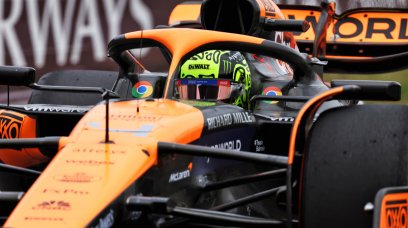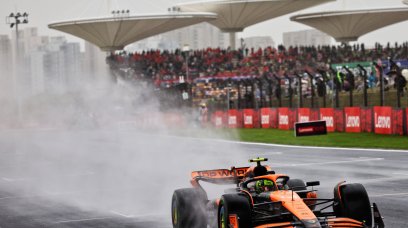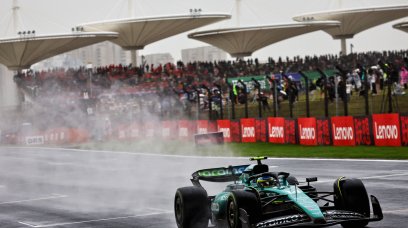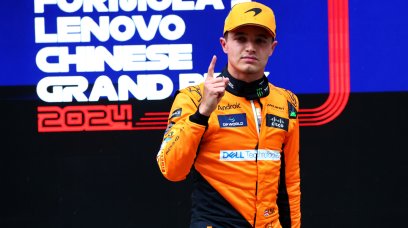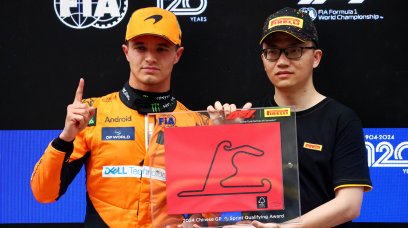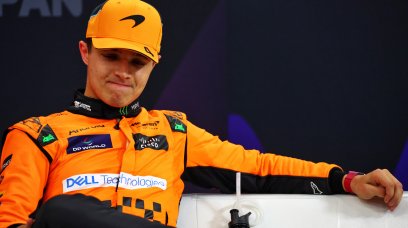The first rumblings that VW Group was considering entering Formula 1 surfaced in July 2021 during a power unit summit called by the FIA during the Austrian Grand Prix weekend: The German carmaker, which comprises 11 brands across two and four wheels and heavy vehicles, was represented by two divisional CEOs, namely Oliver Blume of Porsche and Audi top man Markus Duesmann. Still, attending such meetings is cheap; the costly bit is signing up to F1 participation, whether as power unit supplier or team owner: even after budget caps on chassis and racing operations were introduced last year, there is little change from $250m when all costs are tallied. Add in engine operations and things rapidly double. Thus, one of the objectives of the summit was to determine the conditions under which new brands may enter F1, particularly as engine suppliers. It was clear that budgets of $250m for a season supply of engines to eight cars (at most) - effectively 40 units plus a pile of 'mule' engines used for testing - was hardly going to attract the cream of the motor industry. Nor would, for that matter, retention of the technically fascinating but horrifically expensive and complex MGU-H energy recovery units that hold zero interest for carmakers and are thus of no interest to potential entrants. As for open ended dynamometer testing – just more money going up in a haze of exhaust smoke. Clearly, then, F1 needed to prune engine budgets just as it had team budgets. That was not all: Since the last F1 engine supplier, namely Honda, entered the sport (in 2015), global environmental concerns escalated such that during the same week as the FIA summit the EU announced plans to cut average CO2 emissions for passenger cars with internal combustion engines from 95g per kilometre by 2030 and to zero five years later. Future F1 engines would need to fit in. Much to-ing and fro-ing took place to December last year before an outline set of 2026-30 PU regulations was agreed by the FIA Engine Working Group, but ratification by the FIA World Motorsport Council remained elusive because not all i's had been dotted nor the t's crossed. The governing body knew it had one shot at getting it right, particularly with regard to sustainability and cost control. Screw up and VW Group walked. Eventually all was agreed and announced by the WMSC on 16 August, the touch points being: Budget cap of $100m per annum, limits on bench testing, a glide path for newcomers to ease themselves in, net carbon zero via non-fossil fuels, and 1000bhp power units via a 50/50 mix of ICEs based on current units without MGU-H and hybrid. Porsche and Audi made cooing noises, but would they enter?
Audi confirm 2026 F1 entry
Ten days later Audi hosted a press conference at Spa-Francorchamps during which it confirmed its F1 entry, initially as PU supplier. Present were FIA President Mohammed Ben Sulayem, F1 CEO Stefano Domenicali, Audi's Duesmann and its Board Member for Development, Oliver Hoffmann - under whom Audi Sport falls. As an aside, during the conference Duesmann stated Audi’s F1 engines would be designed and produced in Germany, adding, "If Porsche comes in, they will have their operations in the UK, it will be totally separate." Unsaid was that Mercedes builds its PUs in Britain, plus did Duesmann then know Porsche and Red Bull would pull the plug on their proposed joint venture? "I pinched myself when it was publicly announced," Stefan Dreyer (pictured above), an Audi Sport lifer and its Technical Director for power units, tells RacingNews365 during the first visit by an English-language F1 outlet to Audi Sport's 'Motorsport Competence Centre' in Neuburg an der Donau - situated a 20-minute car ride west of Audi's Ingolstadt headquarters - since the F1 project was confirmed. Inaugurated in 2014, the 47-hectare complex comprises a state-of-the-art technical campus alongside Audi's test and driving experience facility. Here, Audi's Le Mans/WEC LMP1 cars were designed, Formula E power units optimised, the WRX-winning A1 conceived and the complex range extender Dakar RS Q e-tron devised. Indeed, two upgraded buggies were being prepared for the 2023 edition during our visit (picture below).
Audi Formula Racing registered in July 2022
Dreyer battles to contain his enthusiasm: During 19 years with Audi Sport this arch motorsport PU engineer oversaw winning WEC (petrol and diesel, flywheel and hybrid), DTM and FE projects, yet admits F1 was beyond his wildest dreams. He is clearly delighted that a long-term commitment has been made to F1 after the Four Rings withdrew from WEC and DTM in the wake of Dieselgate and swapped FE for Dakar. RacingNews365 can reveal that a new company, namely Audi Formula Racing GmbH, was registered on 19 July 2022, with Adam Baker, formerly the FIA's Director of Safety who reports to Hoffmann, as CEO. The articles of incorporation of the company are: 'Carry out activities required as a manufacturer of powertrain units for motorsport projects, in particular the development, production and sale of corresponding engines.' Together, Baker and Dreyer represented Audi during a raft of meetings at which the 2026-on regulations were thrashed out, not only negotiating with the FIA and F1, but with the current engine manufacturers, all of whom had (and have) vested interests. "We achieved a lot of what we wanted," Dreyer smiles with obvious satisfaction. "That was a basic prerequisite, otherwise we would not have agreed to enter."
Extensive Audi F1 recruitment underway
As the PU regulations crystalised, so Audi tabled its wish-lists, albeit not always successfully: When first the various engineers met, all-wheel drive was under discussion; however, for the foreseeable future the only purpose-built Audi 4WD entries will be said Dakar buggies after F1 decided to stick with rear-driven axles and energy recovery units for various reasons, not least costs. Dreyer does not, though, lament the binning of MGU-H: "It's a very, very complex component where the others have a huge head start, [but] it has no relevance for series production. That's why it wasn't of interest to us to push this technology." However, even after the regulatory parameters were set, the devil was in the detail. Discussions dragged on and Audi feared time would run out: The longest F1 lead time item is the engine - not only design and development timings, but to create a world-class infrastructure from scratch and recruit 300 specialist heads. Dreyer tips his hat at Red Bull Powertrains, which ran its first full V6 concept (albeit without hybrid) on a bench a little under a year after signing off its 2026 ICE project: "We can only speculate [about what Red Bull had on the dyno] but the fact is: You can only congratulate them that an engine is now already running on the dyno. Now it's our turn." He does, though, decline to name a date simply because Audi had various formalities to attend to first, so lost ground: "We needed to present the project and obtain board approval within the company before we could commence the implementation phase. "This phase started a few months before [our press] communication," Dreyer smiles. "Since the spring of 2022 we've recruited a number of specialists under strict declarations of secrecy about their exact functions. The team now includes about 100 employees." The budget cap, which applies to all F1 engine manufacturers from 1 January 2023 - participating engine suppliers are required to enter by 15 October 2022 – determines headcount levels. "300 plus," will be the eventual payroll according to Dreyer: "That's the size we're planning for." Significantly, Mercedes High Performance Powertrains currently employ around 650 heads, of which 450 are believed to be on F1 and the rest on in-house and Formula E projects. Dreyer won't be drawn on comparisons, but says, "We will work from the bottom up and [other engine suppliers] will have to go from the top down. That's an opportunity and a risk for both sides." Various positions will be filled by existing Audi Sport employees, but an intensive recruitment process has begun. "I know the team [in Neuburg]," Dreyer says with obvious pride in their previous achievements, adding, "I have full trust. “However, we need more people and have to recruit [within the wider VW Group] and draw on external expertise and skills." He reveals that advertisements are currently running for 12 different positions, and that they were overwhelmed by applications when the project was confirmed. "It was most encouraging," enthuses Dreyer (49), born in Stuttgart but largely schooled in the USA after his father was transferred.
Audi's MCC not yet ready for F1
He clearly has his work cut out: Although the MCC is state of the art, the site is far from ready for F1, having no single-cylinder test rigs, as previous motorsport PUs for WEC were developed at the Neckarsulm site and delivered to Neuburg as complete units. However, space is not an issue - a wind tunnel was initially planned for - and construction has begun on bespoke halls alongside the main engineering building. Much of the existing engine infrastructure, such as a simulator and six AVL test cells provided by go-to specialist AVL in Graz, is already in place - although last-named installations need to be converted from 4WD (WEC) to single axle operation. Crucially, electric and battery test rigs are in place too, having been used for FE and LMP1 development. "Assembling a Formula 1 engine is like open-heart surgery," Dreyer stresses as he shows us around, a reference to the clinical standards that are obvious by the absence of even a speck of dust. All that said, despite the almost 'dumbed down' nature of the incoming PUs, a massive technological challenge awaits, as Dreyer freely admits: "There is no manual [for F1 ICEs] and we have great respect for [what awaits]. "In the past, we didn't have high-revving concepts in our motorsport projects; the DTM engine was limited to 9,500rpm; diesel engines ran lower anyway." F1 engines run to 12,500rpm and thus Audi has catching up to do, particularly as the competition has developed their power units since 2014. The same applies to valve gear: "We have never worked with pneumatic systems before as we've always had conventional gear valve trains," but Dreyer admits his team relishes the challenge. "As engineers, we're up for it and confident we can do it, but we have respect."
The engine is not, though, the only major challenge facing the project: With power units increasingly integrated with transmissions to form powertrains it is important, "To position yourself in the future as a power unit manufacturer, you also have to focus on the transmission. "The more such components are derived from a single source, the more their efficiency and co-ordination of the components with each other." However, Dreyer clarifies that 'transmission' in this refers to the inner gear cassette without the casing. "I would always see the housing as part of the [chassis] side," he explains, adding that shafts and gears will be produced in Neuburg, but housings - which act as load-bearers for suspension members - will be the responsibility of whatever team takes on Audi's power units. Which raises two questions: Given rumours are rife that Audi has (or will) cut a deal with Sauber - the storyline gained credence when the Swiss team's title sponsor Alfa Romeo announced shortly after Audi's announcement that it was exiting F1 at end-2023, potentially providing Audi with a two-year ramp up window - which team is Audi planning on acquiring or partnering, and does Audi plan to supply customers? The first point is diplomatically batted it away on the basis that he is the head of engines and thus any talk from him about prospective partnerships or team ownership would be beyond his area of responsibility, but Dreyer admits that would welcome a customer supply deal. "The broader you can [harvest data] from the start, the better. Period, end-of," he says before admitting that when the Virgin Formula E team approached Audi for powertrains they were initially wary but soon realised the benefits of duplicated data collection. Nor is there talk of instant domination: "We wouldn't be in motorsport if we didn't want to win," says Dreyer frankly as our two-hour visit draws to an end. "That's what drives us. But to say we'll win in the first year: difficult. If we're in the mix in the first year, achieve individual results, are reliable and competitive, and don't lag behind on any problems, then we're well positioned for the future. "Thereafter everything is open, but we have to succeed in that first."
Most read
